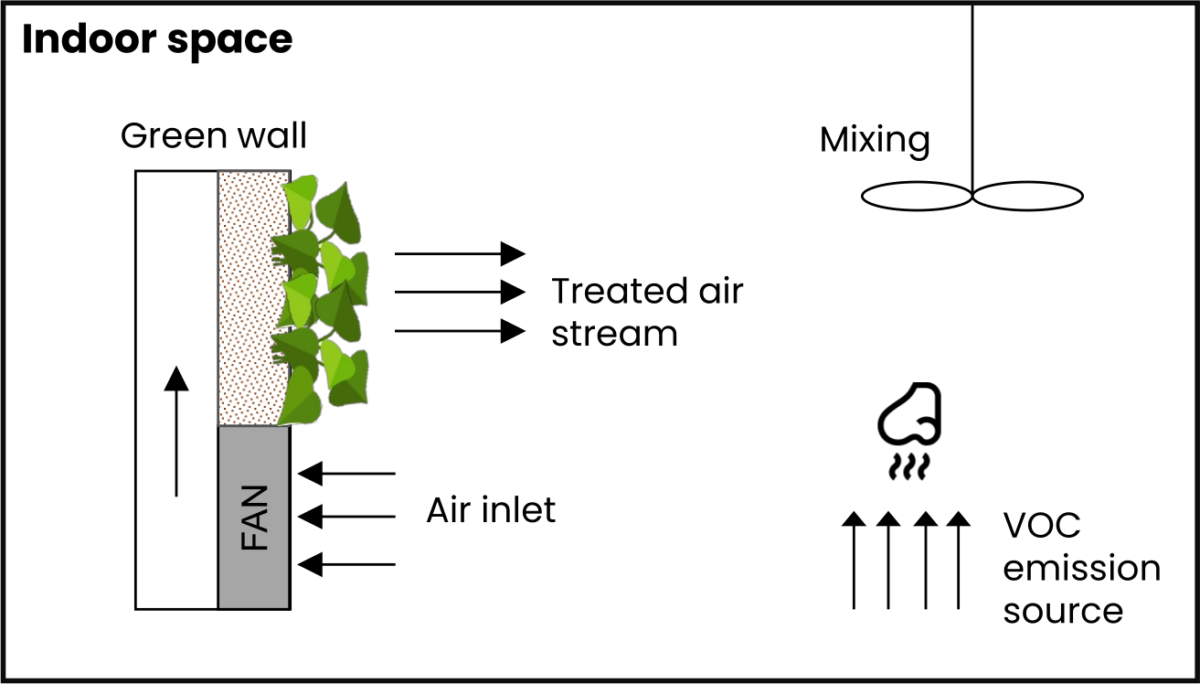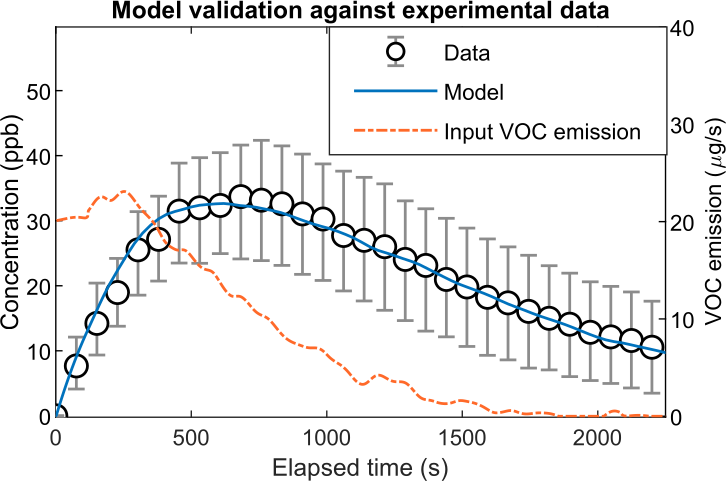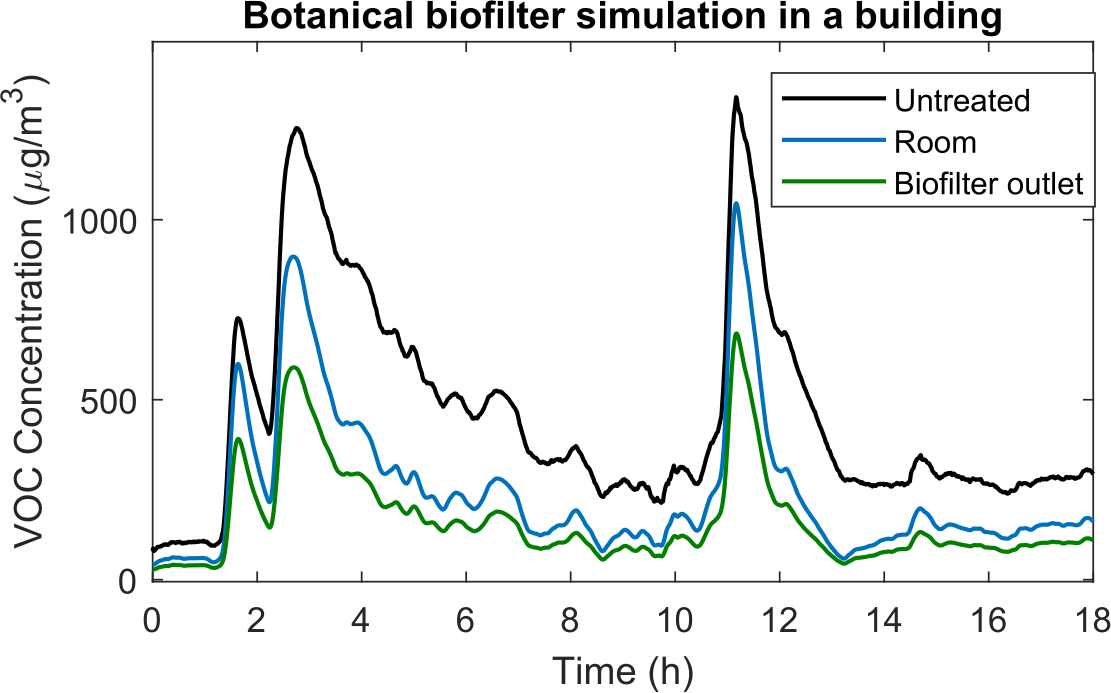Custom-developed model
Case study
Modelling of “active” green walls for volatile organic compounds filtration
Collaboration

Technologies

![]()
![]()

Botanical bio-filtration
Botanical filtration is a biological-based treatment method suitable for removing hazardous volatile organic compounds (VOCs) from air streams.
This treatment technology is based on forcing an air flow through a porous substrate and foliage of a living botanical compartment.

Several “active” botanical filtration systems are commercially available, i.e. in which air is circulated through the plant root zone as well as the growing medium for maximum phytoremediation effect. An example of a botanical filtration system has been developed by PNAT srl. Click here for more information.
The pathways and removal mechanisms during VOC bioremediation have been largely investigated; however, their mathematical representation is a complex task because of several phenomena occurring at different spatial and temporal scales, and distinct phases (gas, aqueous, and solid) where transport processes and biogeochemical reactions occur simultaneously.
In this case study, we describe the result of a collaboration with PNAT and the University of Florence to develop a simulation model for botanical filtration systems.
Objectives
- Develop a model for simulating gaseous pollutant removal processes in botanical bio-filtration systems
- Calibrate and validate the model against measurements and experimental data
- Use the model for the design and optimization of biofilters
Methods
The main modelled phenomena are: (1) the transport of pollutants in the gas phase by airflow advection and dispersion through the soil, (2) mass transfer of pollutants from the gas phase to the liquid phase (soil moisture), (3) mass transfer of pollutants from the gas phase to the soil, and (4) VOC degradation reactions by the microbial community in the soil
The model was written in Python, using open-source tools, as shown in the diagram:
Results
Model test and validation
The validation of the model was carried out with data from a green wall installation. The model parameters were then calibrated to fit the measurements. The results of the simulations are in good agreement with observed data.

Benefits
The model allowed us to analyze and understand the underlying mechanisms of a system, facilitating the identification of critical factors and their interdependencies. The model serves as a powerful tool to simulate and evaluate the performance of proposed designs before implementation, leading to more efficient and cost-effective solutions.

Read more
Masi M., Guidi Nissim W., Pandolfi C., Azzarello E., Mancuso S. (2022). Modelling botanical biofiltration of indoor air streams contaminated by volatile organic compounds. Journal of Hazardous Materials, 422, 126875. DOI: 10.1016/j.jhazmat.2021.126875


